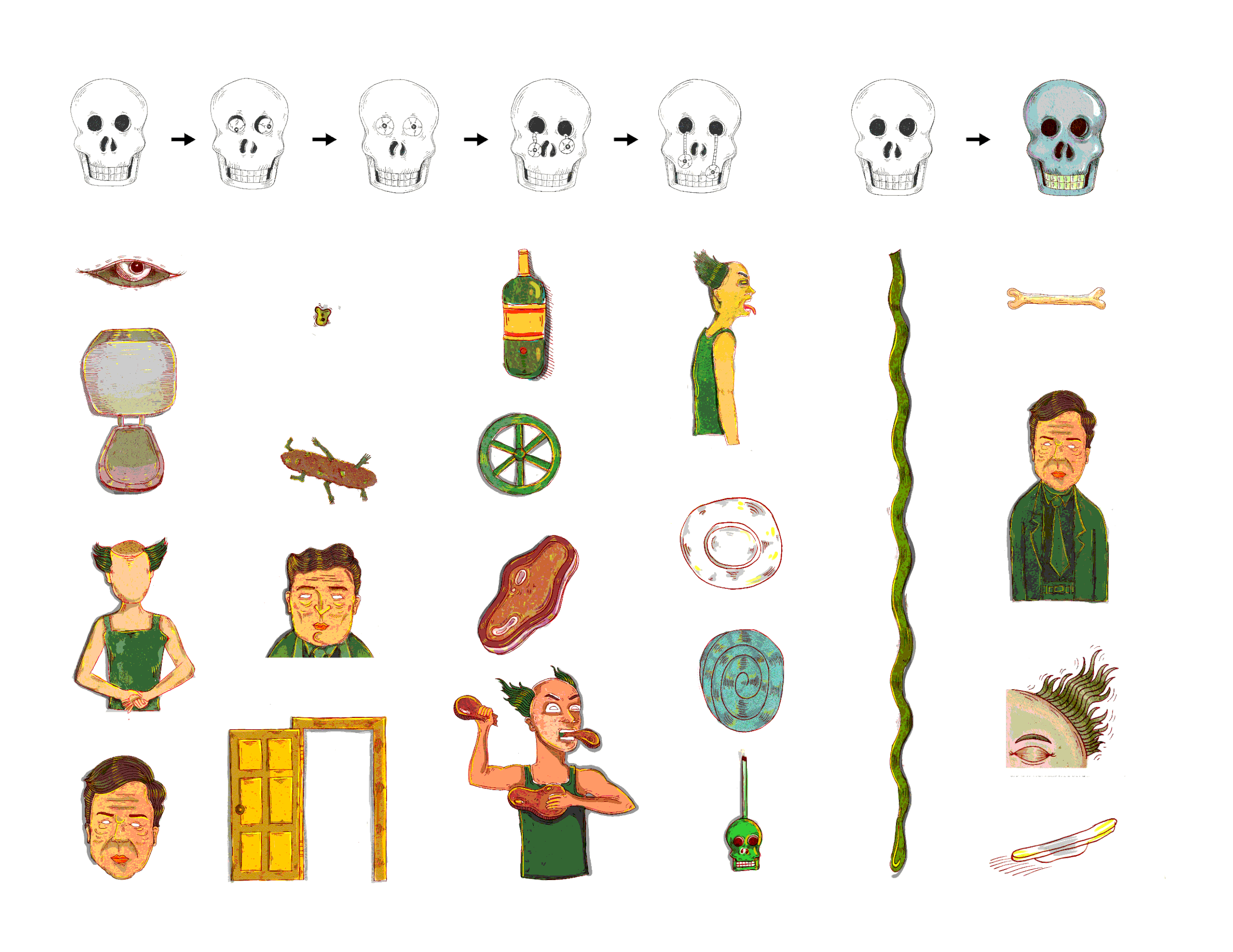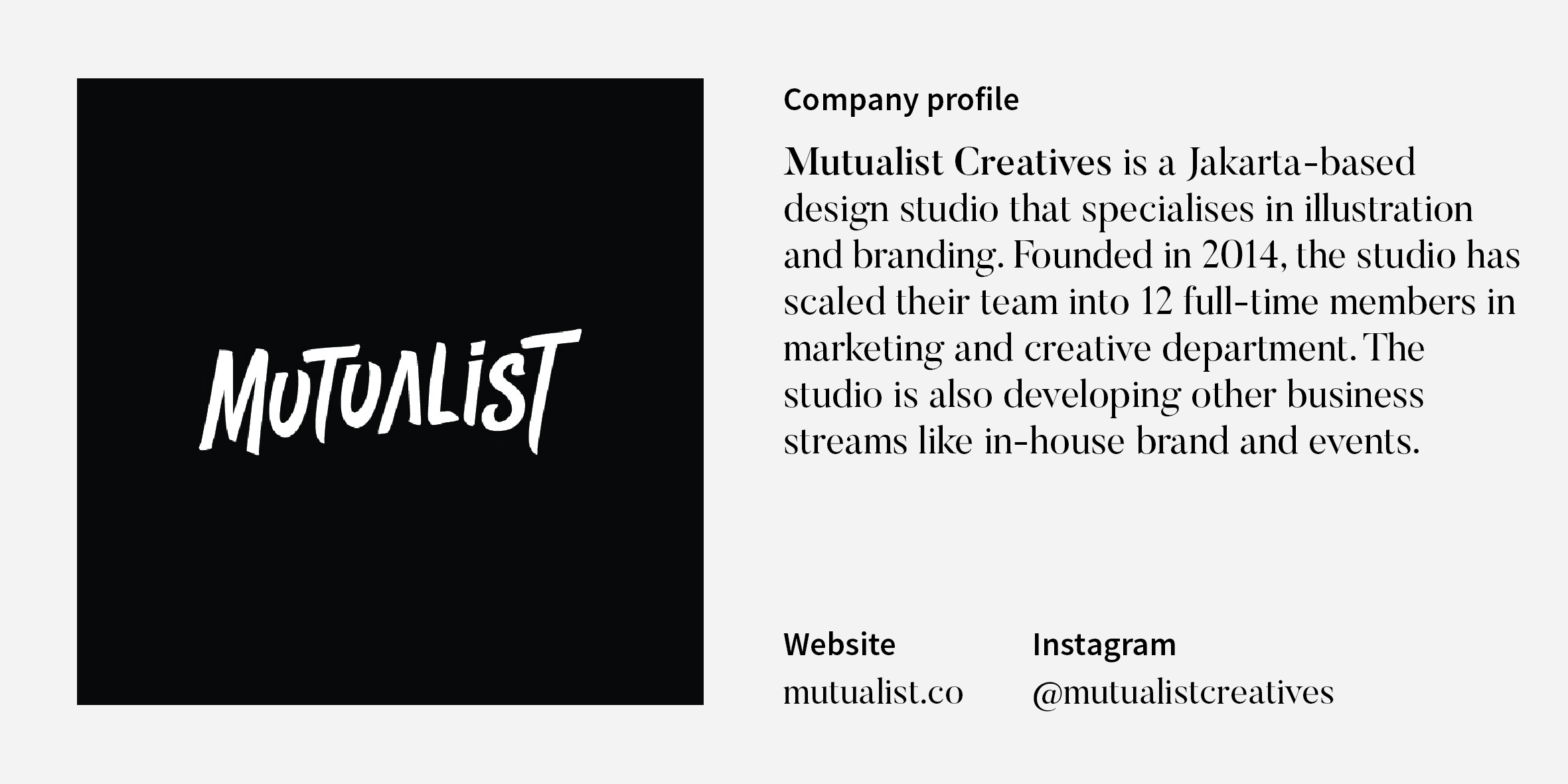Thriving through adversity: How Mutualist Creatives does it
Like many design studios, the founders of Mutualist Creatives, Andre Aditya Manggala and Dionarta Santoso Wijoyo, started by pitching their proposal to friends, family and their family’s friends in 2014. “We compiled every work we’ve ever done and sent them as our company’s portfolio,” said Andre. Thevery first project the studio signed is Museum Wayang.
Fast-forward to 2018, Dio resigned and Andre had to run the studio on his own. That was when Nafi Ghaniy Prasetio stepped in. The transition between Dio’s resignation and Nafi stepping in was a turbulent one.
Andre has to replace more than half of the team, keep up with revisions from clients, pitch to new clients and manage the business side of the studio. “I was a single parent. I know I couldn’t run this studio on my own,” he said.
In 2019, the studio has placed a proper system, launching products and events like Bicara Mutu (Talk about Quality). “It’s like Mutualist 2.0 here,” Andre said.
How did they turn around the studio in short amount of time?
Image: Mutualist for BFI Finance
1. Creative-mind has to synergise with business-mind
Nafi is Mutualist’s past client. “He runs a company that specialises in ticketing. I approached him and asked him to join the team as managing director,” said Andre. Nafi’s background in management combined with Andre’s creative background made a perfect combination in running a business.
“There are finances, operation, marketing in a business. Two head designers cannot run a business,” said Andre. “I tried everything from using different methods to reading, learning and asking people.”
Everything, as Andre put it, was messy when he tried to do everything on his own. “Back then, Andre didn’t do the bookkeeping for small spending like tea bags, coffee or water for the pantry,” said Nafi.
Their pairing also makes feedback more insightful. “We need opinions of people who are not designers. Let’s not forget that clients don’t always understand design.”
2. Implement a proper system into every aspect of operation
Before Nafi came in, there was no limit in number of revision. “The revision alone could go on for months,” said Andre.
“I thought that the more revision made, the happier the client. Instead, everything turned out unorganised. Client didn’t feel satisfied because we were going in circle instead of creating the end results even though they are the one who ask for revisions.”
The system also includes hiring procedure. Previously, hiring was done based on instinct. Nafi then created a rubric for each position. “There are junior designer and senior designer. For junior designer, Adobe Photoshop and Illustrator skills are enough, but to level up, they have to know Adobe After Effects, Indesign and other softwares.”
The studio even has standard procedure on handling clients. The marketing and operational teams are split into two, internal and external. Internal is in charge of developing Mutualist brand.
3. Be flexible and firm to client
As a start-up, studios might feel pressured to serve clients, sometimes more than their capacity, in effort to please clients. For instance, the number of revisions mentioned above. Although the studio has limited the number of revision to two, there are some clients that ask for more. “A lot of times we give one more revision for free because we are offering service to clients in hopes for recommendation to their friends.”
The relationship sometimes extends to partnership. “With the partner, it all depends on how much our trust goes. Sometimes an agency would want to work together and share the success,” explained Nafi.
4. Set timeline and be organised
On the second floor of Mutualist’s office, in front of Andre’s office, there is a huge board containing small pieces of paper marked with dates. “This is a timeline board and it is Nafi’s idea,” said Andre.
“With the timeline board, employees know what and when it needs to be done. Our team could come and wander around until lunch as long as they complete what needs to be done by 8 o’clock. It puts them in a better mood and good mood affects the design,” Nafi added.
Image: Mutualist for Hooq
5. Build professional relationship with employees
The age gap between Andre, Nafi and their team are not wide. “There are times when we can joke and laugh together but there are times when I have to criticise them,” said Andre. “It’s just being professional. We have to separate personal matter with work.”
Hiring a good team, according to both founders, is the most crucial. While it might sound like general knowledge, many companies are not doing it properly. For Andre, a good team is not just about graduating from top universities and having brilliant portfolio.
In fact, it has a lot to do with identifying strength of each individual and delegating the right task according to the strength. The studio has team with different set of skills. “There’s Ezy who’s good at character illustration but he’s not that good at layout design. We assign someone else who’s good at it,” said Andre. Most importantly, the studio looks for people with leadership skills.
“The name ‘Mutualist’ comes from mutualism where both parties benefit from each other. We want to be successful but we also want to spread the success to our employees.”






